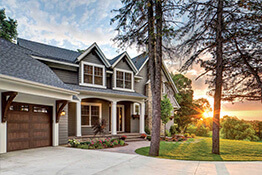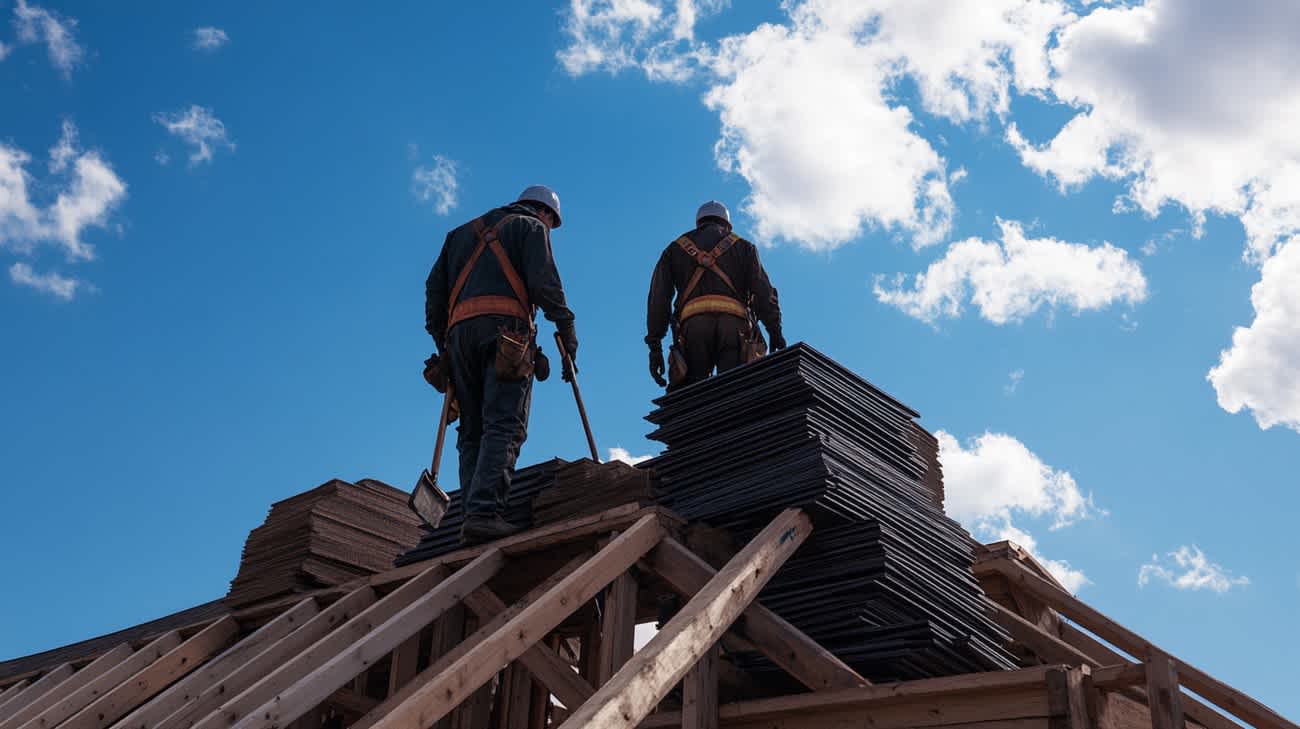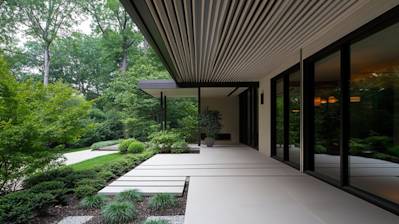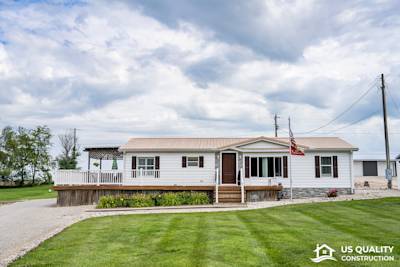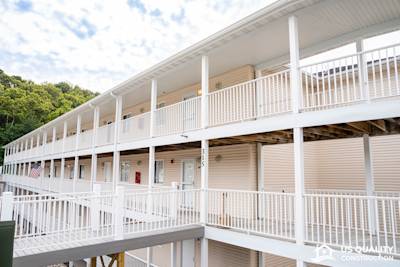If you're looking to construct a new house or carrying out renovations, one key element that needs focus is the roof. A correctly installed, high-quality roof helps guard your home against extreme weather conditions. In this article, we will cover various facets of roofing installation.
Understanding the Importance of Roofing Installation
Having a sturdy and resistant roof involves adequate planning, suitable material selection, and professional installation. Your roof is not just about looks and design. Instead, it forms the primary barrier protecting the house and its inhabitants from outside forces, hence, understanding roofing installation basics is vital for every homeowner.
The Types of Roofing Materials
There exists a myriad of roofing materials today, each offering unique characteristics and benefits. Some popular types include:
Asphalt shingles: These are a common choice due to their affordability, simple installation, and varied color selection.
Metal roofing: They are revered for their durability. They can be pricey to install but can last up to 70 years.
Slate roofing: This is a durable and fire-resistant option that offers a distinctive appearance.
Wood shake shingles: These are energy-efficient and durable; however, they require significant upkeep.
Tile roofs: Despite being pricier than other options, they are chosen for their longevity and unique style.
The Roofing Installation Process
While a professional roofer should be responsible for the actual installation, understanding the process can be beneficial for homeowners.
Preparing the Work Area: Professionals start by staking the work area’s perimeter for safety, preparing the tools, and removing the old roofing if necessary.
Installing Roof Deck Protection: It helps prevent wind-driven rain from infiltrating under the shingles, causing damage.
Laying down Starter Shingles: It ensures proper shingle alignment and prevents water leaks.
Installing Roof Shingles: They usually begin from the bottom and proceed upward, following a systematic shingling pattern.
Applying Flashing: This is crucial around areas prone to leaks like chimneys or skylights.
Fitting Ridge Vents: They ensure an efficient ventilation system, regulating temperature and moisture levels in the attic.
Placing the Ridge Cap Shingles: This gives the roof a polished look while adding protection.
A professional roofer understands the importance of each step, using quality materials and proper installation to lengthen a roof’s lifespan.
The Longevity of Your New Roof
The durability of your roof heavily depends on the material used and the quality of installation. For instance, asphalt shingles, while affordable, typically last around 15 to 30 years. On the other hand, materials like metal or tile, known for their durability, can last up to 70 years or more.
Regular maintenance is also a crucial factor that affects roof longevity.
Choosing the Right Professional for Roofing Installation
A correctly installed roof can save you an enormous amount of money in the long run. Here are some tips on choosing the right roofing contractor:
Check Experience: More years in business usually equates to extensive knowledge and experience.
Credentials and Insurance: Ensure they have the necessary permits, licenses, and insurance.
Customer Reviews and Testimonials: Check past work reviews from different sources to gauge their reliability.
Written Estimates: The contractor should provide a detailed written estimate of costs.
Roofing installation is a complicated, tiresome, and potentially dangerous task best left for professionals. Following these steps and being informed is the first step toward a structurally solid roof to keep you and your family safe for decades.
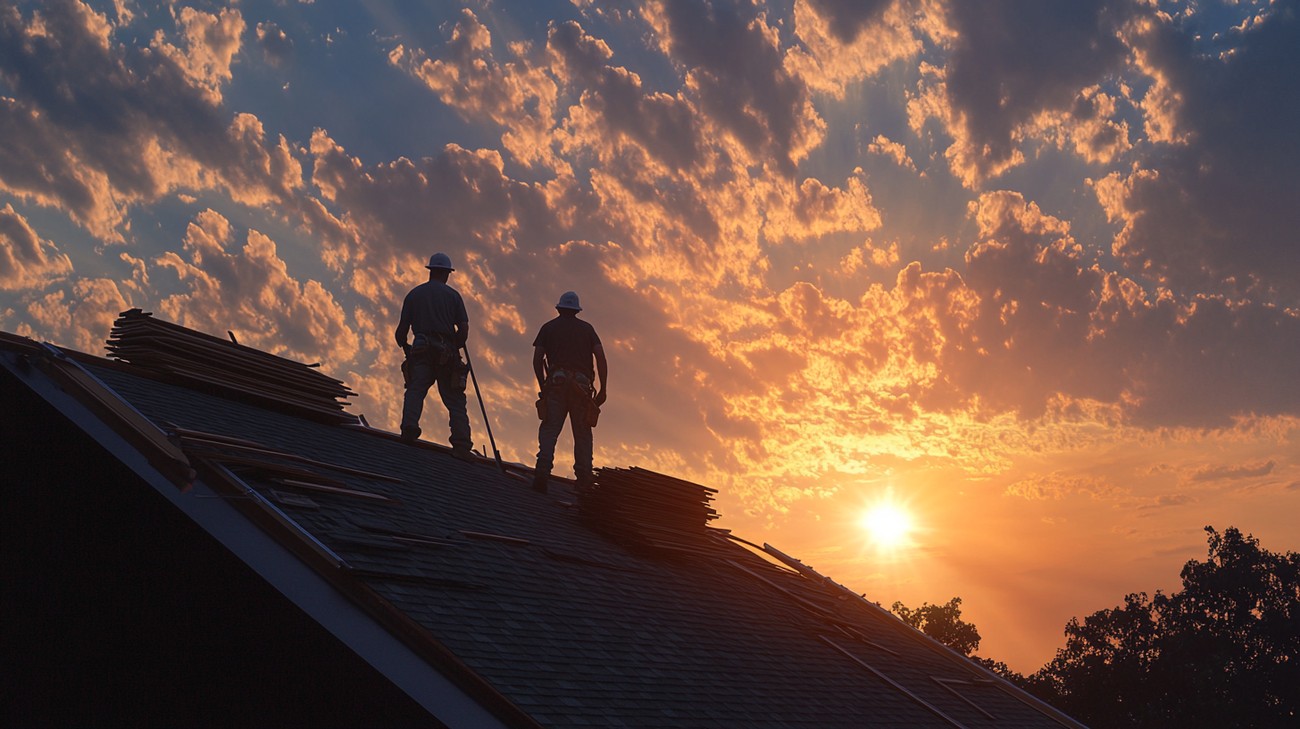
Frequently Asked Questions about Roofing Installation
How Much Does It Cost to Have a New Roof Installed?
The cost of roofing installation can vary widely depending on the material chosen, the size and complexity of the roof, labor costs in your area, and whether the old roof needs to be removed first. However, on average, homeowners in the U.S. spend between $5,000 and $10,000 on a new roof installation. It's advisable to get a detailed estimate from a few roofing contractors before settling on one.
How Long Does Roofing Installation Take?
The duration of roofing installation can vary based on several factors including the size of the roof, the type of roofing material, the complexity of the job, and whether the old roof needs to be removed prior to the installation. However, a typical roofing installation for an average-sized home could take anywhere from a few days to a week.
Is Professional Installation Necessary?
While it might be tempting to consider roofing installation as a DIY project, it's highly recommended that most homeowners hire professional roofing contractors. Roofing installation involves significant heights and can be quite dangerous without proper safety equipment. Additionally, professionals are familiar with the best techniques for securely attaching materials and ensuring that your roof is waterproof.
How Do I Find a Reputable Roofing Contractor?
When looking for a reputable roofing contractor for your roofing installation, it's always advisable to get referrals from friends and family. You can also check online reviews and ratings to get an idea of the contractor’s reputation. Be sure to check their licensing and insurance, and ask for a written contract detailing the scope of the work, materials to be used, labor, pricing, and any warranties offered.
What Should I Expect During Roofing Installation?
During roofing installation, you should expect noise and some disruption. The roofers will need to access your property around your house. Additionally, you may want to consider covering items in your attic or moving items that might be impacted by falling debris. After the installation, a thorough clean-up should be conducted by the installation team.
How Long Does a New Roof Last?
The lifespan of a new roof will largely depend upon the type of material used in the roofing installation. Asphalt shingles, for example, typically last about 15-30 years, while metal and tile roofs can last 50 years or more. Also, the quality of installation, the local climate, and how well the roof is maintained can all affect lifespan.
Can I Install a New Roof Over Old Shingles?
In some cases, installing a new roof over old shingles is possible. However, this is not generally recommended as it may mask underlying issues such as damage to the deck or mildew and moisture problems. Most roofing professionals will recommend a complete tear-off and new roofing installation for the best long-term results.

Pros of Roofing Installation
Increased Property Value
Enhances Curb Appeal
One of the most noticeable advantages of a new roofing installation is how it enhances the aesthetic appeal of your property. A fresh, new roof can drastically transform the appearance of your home, giving it a clean, updated look that can impress neighbours and potential buyers. This is especially true if you opt for modern roofing materials like metal or architectural shingles, which offer a wide range of styles and colors.
Boosts Resale Value
Along with improving the curb appeal, a new roof can significantly increase your home's resale value. Buyers appreciate the value of a new roof, as it minimizes the need for major repairs or replacement in the near future. If selling is in your future plans, a new roof can be a worthwhile investment.
Improved Energy Efficiency
A new roof can lead to significant savings on your energy bills. Today's roofing materials are designed to be more energy-efficient, reflecting more sunlight and reducing the amount of heat absorbed by your home. As a result, your home stays cooler in the summer, reducing the need for air conditioning. In the winter, a properly installed stormproof roof can better insulate your home, keeping the warm air inside.
Safety and Peace of Mind
Reduces Potential for Leaks and Damage
An old, damaged roof can lead to various problems, including water leaks, which can cause structural damage to your home. Mold and mildew can also develop, posing health risks. A new roof installation ensures your home is safe and dry, reducing the potential for costly repairs down the line.
Warranties for New Roofs
Many new roofs come with warranties that can provide you with peace of mind. These warranties typically cover both the materials used and the labor, protecting your investment if issues arise with the roof within a certain timeframe.
Cons of Roofing Installation
High Initial Cost
Roofing installation can be a significant financial investment, depending on the materials used and the size of your roof. While it can increase your property value and generate energy savings over time, these benefits may not offset the steep initial cost for some homeowners.
Time and Disruption
Lengthy Installation Process
Installing a new roof is not a quick process. Depending on the size and complexity of your roof, it could take several days or even a couple of weeks to complete. During this time, you will have contractors working on your property, which could disrupt your daily routine.
Noise and Mess
With the installation process comes a lot of noise and mess. There may be debris falling from the roof, loud noises from the tools used, and a lot of foot traffic around your property. If you are sensitive to noise or value your privacy, this can be a significant disadvantage.
Finding the Right Contractor
It can be challenging to find a reliable, skilled roofing contractor to do your roofing installation. Hiring the wrong contractor can lead to poorly installed roofs, unnecessary costs, or other issues that could negatively affect your home and your peace of mind. It’s essential to do thorough research, read reviews, and ask for references to ensure you’re hiring a reputable contractor.
Weather-Related Delays
Weather can be a significant factor when it comes to roofing installations. Inclement weather could delay your roof installation and extend the duration of the project. Poor weather conditions could also impact the quality of the installation and the durability of the final product.
Potential Roofing Installation Challenges
Installing a new roof is often more complex than just removing the old one and slapping on the new one. There are a number of potential challenges that can arise during the installation process.
Structural Issues
If your roof has underlying structural issues, these need to be addressed during the installation process. This can add time and money to your project. Failure to fix these issues could lead to serious problems in the future.
Rot and Mold
If your old roof had leaks, there could be wood rot or mold that needs to be remediated before the new roof can be installed. This can also add time and cost to the project.
Building Codes
Roofing installations must abide by local building codes. This can limit the type of materials you can use and the installation methods that can be employed. It’s essential to find a contractor familiar with these regulations to ensure your roofing installation is compliant and avoids any potential fines or issues down the line.

Myths/Misconceptions about Roofing Installation
Roofing installation, a critical aspect of any building process, is often shrouded in a cloud of misinformation. Misunderstandings and fallacies about different types of roofs, installation techniques, and maintenance practices could throw homeowners off balance and may lead to poor decisions. This section unravels the most common myths about roofing installation to ensure informed and effective decisions that will lead to long-lasting, durable roofs.
Myth 1: All Roofing Materials are the Same
Fact: Variety and Variation in Roofing Materials
One common misconception is that all roofing materials are virtually the same. In reality, there's a variety of materials to choose from, such as asphalt shingles, metal, slate, concrete, and clay tiles. Each material, moreover, has its distinct traits touching on durability, aesthetic appeal, cost, weight, and environmental sustainability.
Myth 2: Re-Roofing Over Existing Shingles is Always Okay
Fact: Legal and Technical Limits to Re-roofing
While it may seem cost-effective and timesaving to simply lay new roofs over the existing shingle layer, this practice could potentially compromise the roof's stability, especially if there are already two layers in place. Many building codes restrict this practice and insist on removing the old roof before installation.
Myth 3: Roofing Installation is a Do-It-Yourself Job
Fact: Skill and Expertise Required for Roofing Installation
While DIY projects can be an exciting prospect for enthusiastic homeowners, a task as critical as roofing installation should never be taken lightly. Proper installation requires extensive knowledge about various roofing materials, safety measures, and weather considerations. Doing it wrong would not only cost more to fix but may also put lives and property at risk.
Myth 4: More Attic Insulation is Better
Fact: Balance is Key with Attic Insulation
While insulation is key to energy efficiency, the "more the better" rule doesn't necessarily apply here. Over-insulating the attic might lead to moisture problems, such as mold growth and wood decay. Well-versed roofing contractors understand the right balance for providing optimal insulation.
Myth 5: Roofing Installation Can Happen in Any Weather
Fact: Weather Considerations in Roofing Installation
While certain types of roofing can be installed or repaired during light rain or snow, optimal weather conditions generally produce the best results. Cold temperatures might cause asphalt shingles to become brittle, while humid conditions may affect installation integrity.
Myth 6: Flashing Needs to be Replaced Only when It Leaks
Fact: Replace Flashing with Roof Replacements
Roof flashing, which is essential in preventing leakages around the chimney, vents, and other roof projections, should generally be replaced during significant roof replacements. Relying on it until it leaks might lead to water damage to the structure.
Myth 7: New Roofs Don't Require Maintenance
Fact: Ongoing Maintenance for Roof Longevity
Some homeowners believe that once a new roof is in place, it can be "out of sight, out of mind." However, periodic inspections and small repairs can ensure the longevity of your roof. Small issues caught early on can prevent more significant problems in the long run.
Myth 8: Roof Warranties are All-Inclusive
Fact: Read the Fine Print in Your Warranty
While roofing warranties sound reassuring, homeowners need to clearly comprehend what is and isn't covered. Many times, warranties only cover material defects and not the installation process. Also, some require periodic maintenance and lack of it may void the warranty.
Summary
Roofing installation isn't something you'd call a quick DIY project. It's an entire process that requires precision, skill, and understanding. You could have the best materials, but if the installation isn't right, your roof might not hold up as it should. Experts in roofing installation don't just slap on some shingles, they inspect your structure, ensure a proper fit, seal for weather protection, and guarantee a sturdiness that will last for years!
So, next time you're considering a new roof, remember that a roofing installation isn't just about what happens on top of your house. It's about providing protection, ensuring energy efficiency, and adding value to your home. It’s a substantial project that, when done right, yields significant benefits for your home. From better ventilation to a more eye-catching curb appeal, proper roofing installation plays a huge role.
Last but not least, if you're in need of roofing installation, it's best to call in the professionals. Sure, it might seem like a hefty investment initially, but remember, a well-installed roof can last you more than 20 years! You want a team that will get it done right the first time, and stands by their work with a strong warranty. Remember, good roofing installation is more than just an aesthetic appeal, it's a long-term investment. So, choose wisely.
About US Quality Construction
US Quality Construction is your go-to source for all your construction needs in Kansas City, MO. We're a local, family-owned business dedicated to providing our community with high-quality construction services. With decades of experience under our tool belts, we pride ourselves on our outstanding craftsmanship, excellent customer service, and a commitment to safety. From residential remodels to commercial projects, there's no job too big or too small for our expert team. At US Quality Construction, we build more than just structures; we build relationships with our clients, fostering long-term partnerships built on trust and performance. So, if you're looking for a top-notch construction team, your search ends with us!
Tags: installation, roofing, construction,
